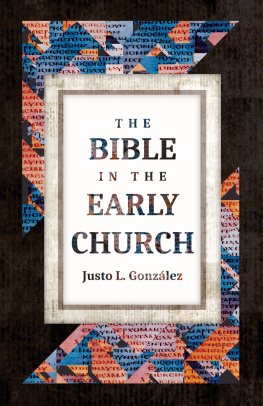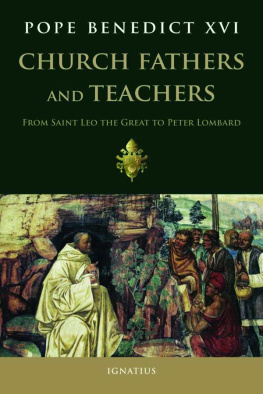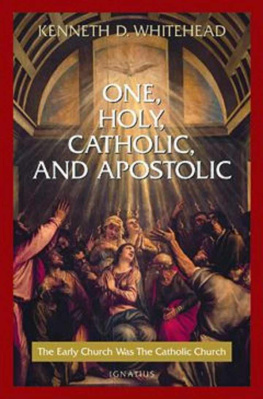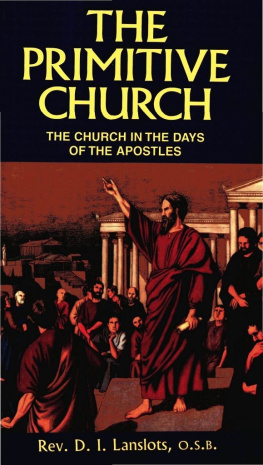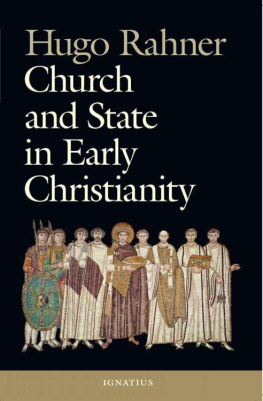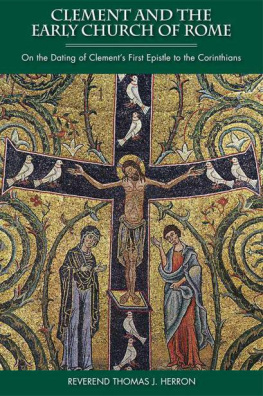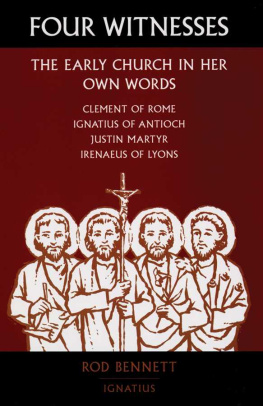CELIBACY IN THE EARLY CHURCH
STEFAN HEID
Celibacy in the
Early Church
The Beginnings of a
Discipline of Obligatory Continence
for Clerics in East and West
Translated by Michael J. Miller
IGNATIUS PRESS SAN FRANCISCO
Original German edition:
Zlibat in der frhen Kirche:
Die Anfnge einer Enthaltsamkeitspflicht
fr Kleriker in Ost und West
1997 Ferdinand Schningh GmbH, Paderborn
Cover art: Romanized Christ as the Good Shepherd
Third century fresco
Catacomb of Priscilla, Rome, Italy
Erich Lessing / Art Resource, New York
Cover design by Roxanne Mei Lum
2000 Ignatius Press, San Francisco
All rights reserved
ISBN 978-0-89870-800-4
Library of Congress control number 00-100232
Printed in the United States of America
Contents
a. The Minister Should Be The Husband of One Wife
b. The Profile of the Married Minister
a. Clerical Ministry Undergoes a Uniform Development
b. The Early Influence of Movements Hostile to the Body
a. Clement of Alexandria Praises Marriage and Continence
b. Tertullian of Carthage Advocates Continence
a. Why Is Digamy Forbidden Only to Clerics?
b. Tertullian of Carthage Complains About Digamous Bishops
c. Callistus of Rome Does Not Count Marriages Contracted before Baptism
a. A Syrian Constitution
b. Monogamy and Continence
c. Begetting Spiritually, Not Corporally
d. Perfect Priesthood
e. Constant Availability of the Priest
a. Elvira Prohibits Marital Relations for Higher Clerics
b. Canon 33 Is the First Formal Celibacy Law
a. No Cleric May Be Married a Second Time
b. The Prohibition of Marriage Applies Also to Deacons
c. Lewd Conduct Excludes One from Ordination
d. The Wives of Clerics Are Duty-bound as Well
e. Clerics in So-called Spiritual Marriages
f. We Know Nothing of Legitimate Children Born after Ordination
g. Disciplinary Infractions Prove the Rule
a. Epiphanius of Salamis
b. Jerome in Bethlehem
c. John Chrysostom
a. Can Digamists, Too, Not Practice Continence?
b. Mitigation of the Digamy Prohibition, but Not of the Continence Discipline
c. Do the Pastoral Letters Merely Forbid Polygamy?
a. After Ordination No One May Marry Any More
b. Must Married Candidates for Orders Be Widowed ?
c. Celibate and Ascetical Clerics Are Preferred
d. Ascetical Clerics May Not Dismiss Their Wives
a. Gregory Nazianzen the Elder
b. Gregory Nazianzen the Younger
c. Cyril of Jerusalem
d. Athanasius of Alexandria
e. Synesius of Cyrene
f. The Canons of Hippolytus
a. The Schism in North Africa Endangers Clerical Continence
b. The Reform Movement in Spain Includes Clerical Continence
a. Ambrosiaster Testifies to the Acknowledgment of Clerical Continence
b. The Opponents of Clerical Continence in Spain Are Not Convincing
c. Is Daily Celebration the Origin of Clerical Continence?
d. Clerical Continence Comes under the Suspicion of Manichaeism
a. A Synod in Rome Insists on The Chastity of the Church
b. Jovinian Precipitates No Crisis of Clerical Discipline
c. Once Again: Clerical Continence Is Not Manichaean
d. Does Baptism Remove the Impediment to Orders of Digamy?
a. Pope Innocent Writes to Rouen and Toulouse
b. Vigilantius Does Not Oppose Clerical Continence
c. Do Young Monks Want to Marry and Join the Clergy?
a. Do the Popes Promote the Continence Discipline of the East?
b. The Popes Speak of the Apostolic Origin of Clerical Continence
c. The Popes See in Clerical Continence an Ecumenical Concern
a. The Paphnutius Legend Champions the Interests of the Novatians
b. Emperor Justinian Summarizes the Entire Clerical Discipline
c. A Momentous Innovation at the Second Council of Trullo (691)
a. Opponents of Clerical Continence Can Scarcely Be Detected
b. Is Marital Continence Imaginable in the First Place?
c. Can the Grace of Continence Be Made an Obligation?
d. Continence Is an Expression of Religious Reverence from Time Immemorial
Preface
Celibacy polarizes, whatever position one may take on the matter. Discussions about it as a rule involve arguing with history. The subject of the present work is not celibacy today. The question posed is rather: What was the attitude of ordained men in the early Church toward sexuality? Was the life-style of the clerics of the early Christian era a matter of taste? Or was there already something like obligatory celibacy? During her first centuries, as the Church was being consolidated as an institution, she also laid down the line that would be followed until today in clerical questions. Therein lie the explosives. And one can already make the statement: Without the early Church there would be no celibacy today. The Church of the first centuries contributed more to celibacy than is often thought. But when exactly was the switch thrown and the track determined? And whose efforts were decisive here? What arguments and motives played a role in the development?
Much research has already been done on this topic, and one might imagine that there is nothing more to be gained. The author thought so, too, when he became involved with preparing a lecture on the foundations of celibacy in the early Church. The investigation brought to light some surprising findings, which brought home the fact that the whole subject needed rethinking. Many discussions and various suggestions have expedited this process. Thus the present book is amicably dedicated first of all to my confreres in the priestly and diaconal ministry. I wish to express my thanks to Ferdinand Schningh Verlag for their outstanding supervision of this publishing project, to the Media Services Department of the German Bishops Conference for subsidizing the printing costs, and to Frau Silvia Cichon, a theology student in Cologne, for preparing the bibliography and proofreading the manuscript.
Neuss, October 1996
Stefan Heid
I. The Labyrinthine Paths of the Inquiry
There is no disputing the fact that already during the first centuries of the Church there were clergymen, including married men as well as unmarried, who after receiving holy orders renounced all sexual intercourse. To what extent was this a question of a purely personal decision made by individuals? Is it possible that for clerics there was something like an obligation to live in continence? Furthermore, how should we evaluate the fact that married clerics, too, observed continence? Can historical roots of the present discipline of celibacy be found in the early Church?
1. Celibacy Is an Inadequate Notion
At least in one respect the balance sheet is unambiguous: the early Church knew of no obligation for deacons, priests, and bishops to be in the unmarried state. So in this sense there was in the early Church no celibacy (from the Latin caelebs = unmarried). Some deduce from this that obligatory celibacy was a late invention of the papal Church. The prohibition against marriage is often connected with the Second Lateran Council in the year 1139. In the Church at her beginnings, in any case, no cleric was required to be unmarried, and this remained so well into the Middle Ages. That, indeed, is unassailable. During the first centuries the celibate clergyman was not exactly the exception, but neither was he the rule.
Since the nineteenth century this indisputable fact has sparked a number of popular and academic controversies. For many people it is a sign that action is needed, in many places giving rise to the wish that obligatory celibacy in the Roman Catholic Church would be abolished. Their program is expressed in the urgent title of a book from the pen of a concerned party: Priests Are Allowed to Marry . Of course, historical research into the discipline of celibacy is by no means complete. In recent years, certainly, voices have been raised that call into question the accuracy of what has developed as a consensus about the clerical discipline of the early Church. The picture we have of the clerics way of life has changed to such a degree that one must now approach celibacy differently.
Next page

